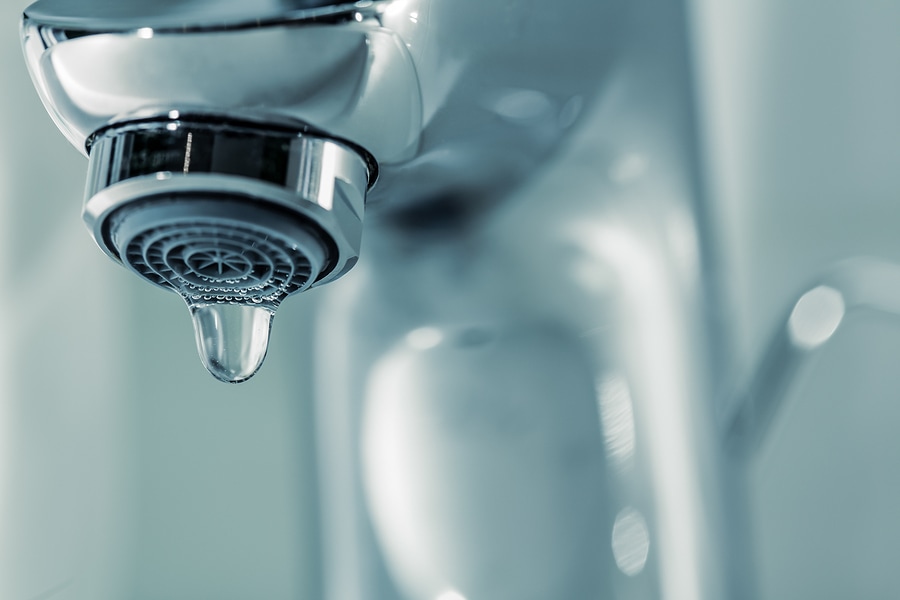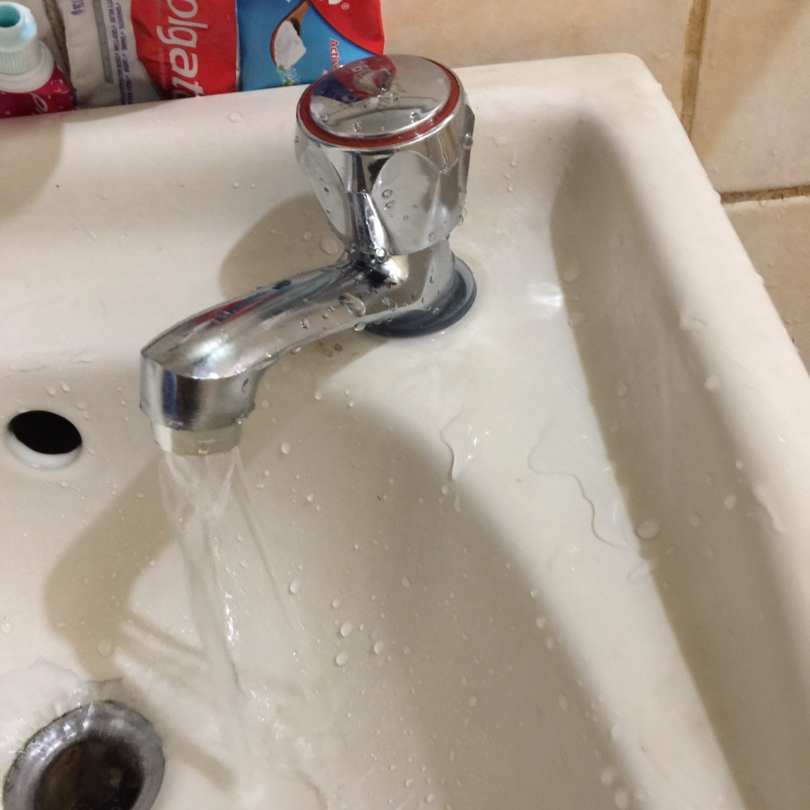Learning the Relevance of Correcting a Dripping Faucet
Learning the Relevance of Correcting a Dripping Faucet
Blog Article
The author is making a number of good points about Why Are My Faucets Dripping (And Can I Fix It Myself)? as a whole in the article down below.

Trickling taps might feel like a minor aggravation, but their effect surpasses just the inconvenience of the audio. From drainage to incurring unnecessary monetary expenses and health threats, overlooking a leaking faucet can cause different effects. In this write-up, we'll delve into why it's essential to address this common household issue promptly and effectively.
Wastage of Water
Environmental Effect
Leaking faucets add considerably to water wastefulness. According to the Environmental Protection Agency (EPA), a solitary tap trickling at one drip per second can waste more than 3,000 gallons of water per year. This not just stress water resources but additionally impacts environments and wildlife based on them.
Financial Prices
Raised Water Expenses
Beyond the environmental effect, leaking taps can pump up water expenses substantially. The gathered waste in time converts right into higher utility costs, which can have been avoided with timely repair services.
Possible Residential Property Damages
Moreover, extended trickling can result in harm to fixtures and surface areas bordering the faucet. Water buildup can trigger discoloration, corrosion, and even structural issues if left ignored, resulting in additional fixing expenses.
Wellness Worries
Mold And Mildew and Mildew Development
The continuous presence of dampness from a leaking faucet develops a suitable environment for mold and mildew and mildew development. These fungis not just jeopardize indoor air quality but additionally posture wellness threats, especially for individuals with respiratory problems or allergic reactions.
Waterborne Illness
Stagnant water in trickling faucets can come to be a breeding place for bacteria and various other microorganisms, enhancing the threat of waterborne illness. Contaminants such as Legionella microorganisms flourish in stagnant water, possibly leading to significant diseases when ingested or breathed in.
DIY vs. Specialist Repair
Pros and Cons of Do It Yourself Repair
While some might try to repair a leaking faucet themselves, DIY repair services come with their very own collection of challenges. Without appropriate understanding and devices, do it yourself attempts can intensify the problem or bring about insufficient repairs, prolonging the trouble.
Advantages of Working With a Professional Plumber
Hiring a professional plumber guarantees that the underlying reason for the leaking faucet is dealt with efficiently. Plumbing technicians possess the know-how and tools to detect and fix faucet issues efficiently, conserving time and minimizing the risk of more damage.
Step-by-Step Overview to Fixing a Dripping Faucet
Devices Called for
Before attempting to fix a trickling faucet, collect the needed devices, consisting of an adjustable wrench, screwdrivers, replacement components (such as washers or cartridges), and plumber's tape.
Usual Faucet Issues and Their Solutions
Recognize the kind of tap and the particular concern triggering the drip. Usual problems consist of worn-out washers, rusty valve seats, or malfunctioning O-rings. Refer to producer directions or on-line tutorials for step-by-step assistance on fixings.
Preventive Measures
Routine Upkeep Tips
To stop trickling faucets, execute routine upkeep such as cleansing aerators, checking for leakages, and changing damaged components without delay. In addition, take into consideration mounting water-saving tools or updating to a lot more effective fixtures.
Significance of Prompt Repair Works
Resolving leaking faucets as soon as they're noticed protects against more water waste and potential damages, eventually saving both water and cash in the future.
Effect On Residential Property Worth
Understanding of Well-Maintained Residential Or Commercial Property
Keeping a building in good condition, including resolving maintenance concerns like dripping taps, enhances its viewed worth and value among prospective customers or tenants.
Impact on Resale Worth
Residences with properly maintained plumbing fixtures, including taps, command greater resale worths in the real estate market. Attending to trickling faucets can add to a favorable impact during residential or commercial property assessments and arrangements.
Ecological Duty
Individual Contribution to Preservation
Taking obligation for repairing trickling faucets straightens with wider initiatives towards water conservation and ecological sustainability. Every person's actions collectively make a substantial influence on preserving precious sources.
Sustainable Living Practices
By prioritizing timely repair work and taking on water-saving routines, individuals add to lasting living methods that profit both present and future generations.
Verdict
Dealing with a trickling faucet exceeds plain convenience; it's a crucial step towards preserving water, decreasing monetary prices, and safeguarding health and building. Whether through DIY repair work or expert help, doing something about it to deal with leaking taps is a little yet impactful method to promote accountable stewardship of resources and contribute to a healthier, more lasting future.
Why Are My Faucets Dripping (And Can I Fix it Myself)?
Causes of a Dripping or Leaking Faucet
Whether you’re hearing drops of water falling and hitting a sink, or noticing water ooze out from the base of the spout, you shouldn’t ignore a dripping or leaking faucet. And, the good news is, sometimes you can fix the problem yourself.
In this article, we’ll review a few common causes of dripping and leaky. We’ll also walk you through some basic ways to find the problem and handle it without calling anyone — and let you know when to call in a pro.
But, no matter what the cause, or whether you can handle it on your own, the sooner you address it, the better.
Each drip may be a tiny amount of water. But, they all add up quickly. According to the U.S. Geological Survey, one faucet losing one drop every 20 seconds — five a minute — wastes around a liter of water every day, and 173 gallons a year.
Add in more than one in your house, and it’s a lot of water to waste. So, we’ll help you get to the bottom of things quickly.
Four Reasons Your Faucet May Be Dripping
Aerator is Damaged or Unseated Valve Seat is Corroded O Ring is Loose or Worn Out Part of the Assembly is Loose Aerator is Damaged or Unseated
If you unscrew the end of your faucet, you’ll find the aerator. It’s the little stem piece with a screen on it that shuts off the water circulation.
If it’s damaged, or if it’s not sitting right, it will allow water to pass through.
Valve Seat is Corroded
Next is the valve seat, which is connected to the washer. If the washer wasn’t in place correctly, then it could have ground against the seat. Over time, this damages the valve seat.
The problem could also be corrosion: Over time, the part has worn out, and it’s now allowing water to pass through.
O Ring is Loose or Worn Out
Since the o ring is only a small rubber gasket, it’s a common reason why the faucet is dripping. You’ll find it at the base of the faucet, and it’s there to keep water from coming out where it’s not supposed to.
However, it’s common for the o ring to wear out over time. When it does, you’ll notice a drip.
Part of the Assembly is Loose
So far, we’ve looked at a few small, specific parts. But, the problem could be anywhere in the assembly if something’s out of place.
Even if a part isn’t damaged, over time, it may have become loose or dislodged. It could be the parts we mentioned, or the aerator at the tip of the faucet, the stem itself,
Can I Fix a Leaky Faucet Myself?
Depending on the problem, and how handy you are, there’s a chance you can fix a leaky faucet without calling a professional. But, you do run the risk of making the problem worse.
If it’s a small drip, you can certainly try a few troubleshooting tactics. We’ll walk you through them in a moment.
But, no matter what, your first step should be shutting off the water coming into the faucet. You should find a shutoff valve under the sink on the pipes leading to it. Turn each one clockwise until they close tightly.
Next, make sure you have the right tools for whatever you’re attempting. It’s tempting to make do with what you have. But, you need the right ones for a reason: You’re often dealing with small parts that can break if you handle them carelessly.
If you’re feeling confident, here are some places to start.
Items Near the Tip of the Faucet
A few of the parts we mentioned — particularly the valve seat and washer — are located at the tip of the faucet where the water comes out. They’re easy to access, making it a good place to start.
Check the O Ring
To check the o ring, you’ll need to take off the spout at the base. It’s easiest on kitchen sinks with long spouts, versus the smaller, bulkier base on most bathroom sinks.
Either way, this can be tricky, so do it carefully and don’t force anything. If it’s not coming right off, you’re much better off calling in a pro than possibly breaking something.
For a kitchen sink, there’s usually a nut or coupling assembly at the base of the spout. These often slide off easily without using any tools.
Once you’ve disassembled those parts, gently but forcefully twist off the spout.
Then, you can see the o rings. There should be two of the rubber gaskets on the base. If they look worn or damaged, replace them, and see if that solves the problem.

I was made aware of that report about Why It's Important to Fix Leaky Faucets through an acquaintance on a different web address. Be sure to set aside a second to promote this page if you liked it. I appreciate your readership.
Report this page